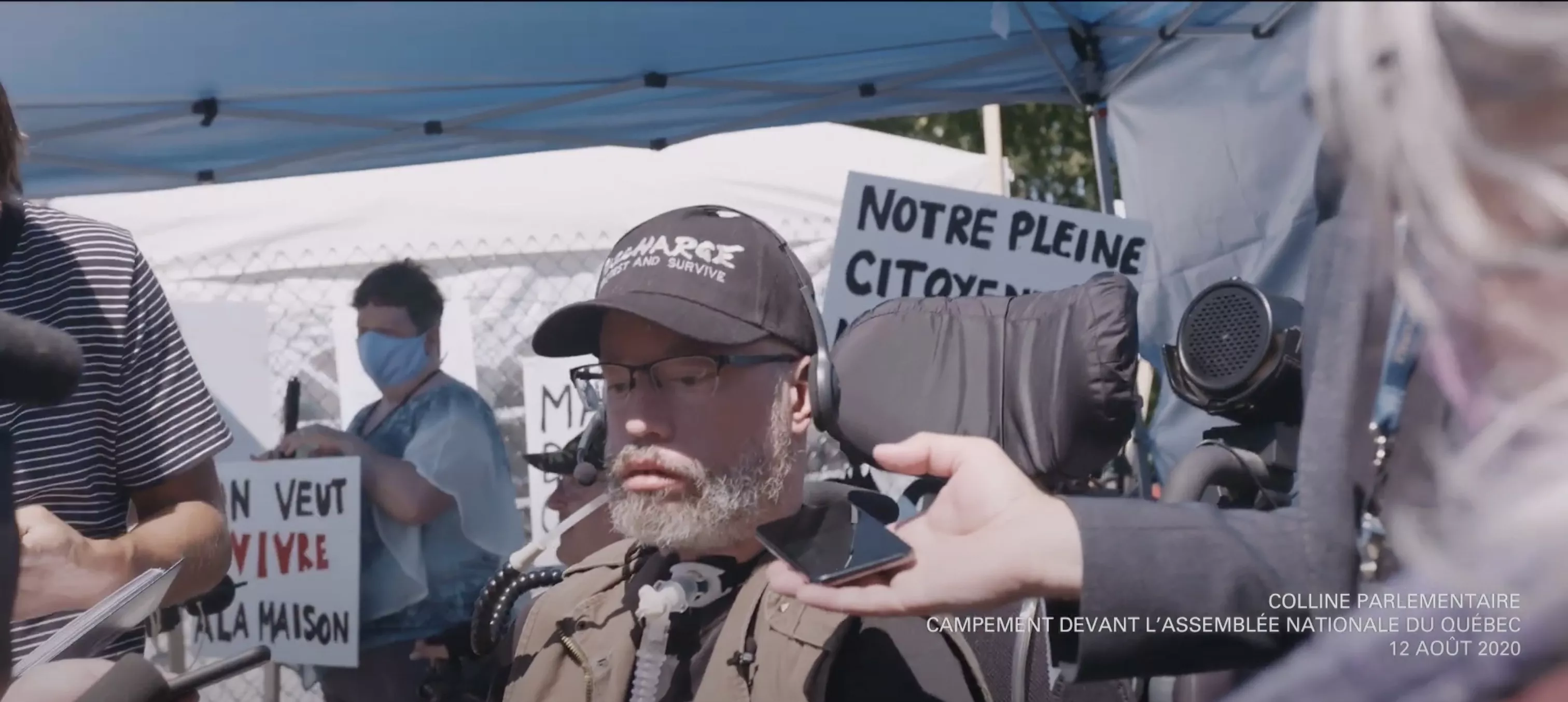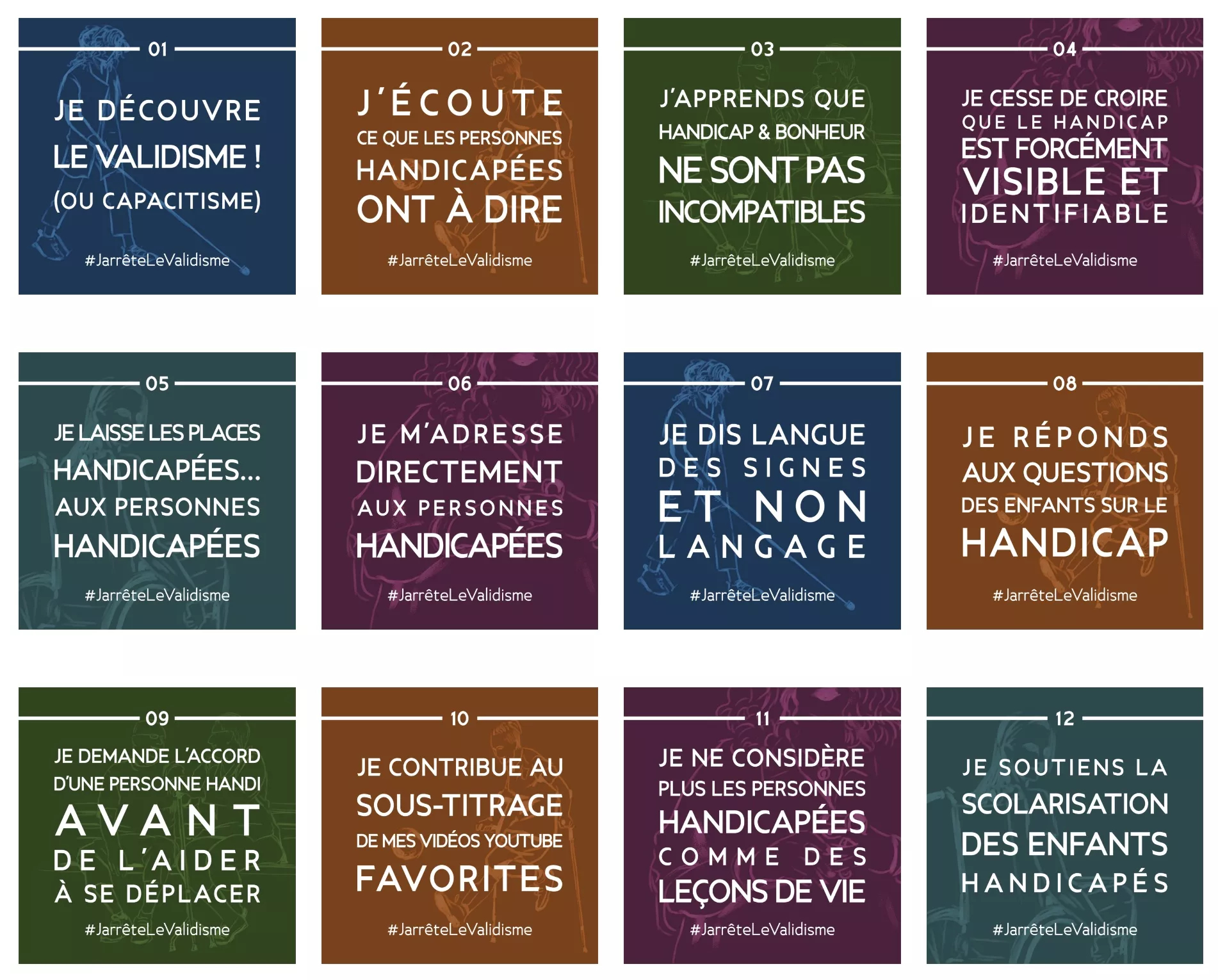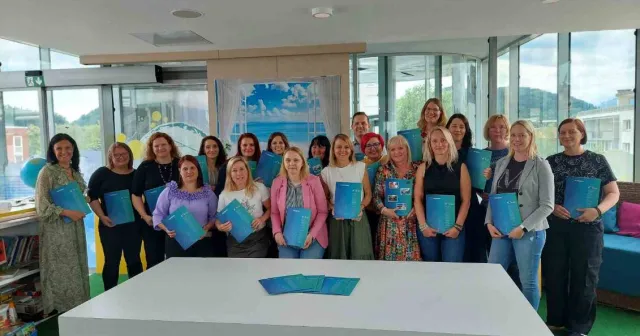Supporting people with disabilities: moving away from an ableist approach
Despite the existing legal obligations for accessibility, administrations, local authorities and local stakeholders still find it very difficult to take into account the diverse range of disabilities when designing their services. In 2020, only 13% of public websites were accessible to people with disabilities, and these people still suffer a great deal of discrimination in general.
For Numérique en Commun[s], Céline Extenso and Béatrice Pradillon, co-founders of the disabled-feminist collective Les Dévalideuses, look at the structural reasons for this critical situation and suggest concrete ways of making digital public services truly inclusive environments for everyone.
This article was originally published in 2022 in La Revue NEC 2021, published by the Agence Nationale de la Cohésion des Territoires (ANCT). To read the interview in context, as well as the rest of the journal devoted to digital technology in the public interest, see here (in French).
—
Ableism, a concept that is still unfamiliar to many
The civil rights movement for people with disabilities emerged in the English-speaking world in the 1960s and 1970s. Following in the footsteps of the Afro-American movement, students with disabilities dependent on regular assistance campaigned for the right to independent living. They demanded that they be allowed to leave institutions and that campuses be designed in such a way as to enable them to live independently.
This movement gave rise to a new theorisation of disability, at the origin of disability studies. Whereas the formerly dominant medical model saw disability as a biological defect that produces a situation of moral and/or material inferiority, the social model places disability in its collective dimension. A person has a disability first and foremost because the environment in which they live is not adapted to their needs.

This work Extrait du documentaire by Carrefour familial des personnes handicapées is licensed under All rights reserved
This change of perspective enabled society to take more responsibility and move away from charity, solidarity and infantilisation towards a real focus on the empowerment and self-determination of people with disabilities.
Today’s anti-ableist movements fall somewhere between these two models. Without challenging the fact that disabilities exist independently of the environment - some people will always experience serious impediments, fatigue and chronic pain even with an accessible environment - they denounce ableism as a system of oppression that discriminates against disabled people because they do not meet “able” medical standards.
“Accessibility is not just for passive audiences: in theatres, there are disabled seats in the auditoriums, but few facilities are designed to make the stage, backstage or the organisation accessible. But we are not just spectators, we can also be actors.”Céline Extenso - Les Dévalideuses
Where does digital technology fit in?
The story of Les Dévalideuses is a testament to the richness and complexity that digital tools have to offer. The collective was initially set up via social networks, in reaction to the inability of activists to include disabled people in their actions (inaccessible meetings, travel not anticipated, etc.). Video tools in particular make it much easier for the group to meet, with one of the main aims being to align practices with those in the most difficult situations so that we can work together on an equal footing.
Nevertheless, most of the tools, including free and open-source tools, were found to be highly incompatible, forcing the collective to regularly change its modes of communication. The fact is that a wide range of disabilities (motor, sensory, cognitive, psychological, etc.) are rarely taken into account in the design of digital services, despite the fact that any organisation with a public service remit and any company with a turnover in excess of €250 million[5] have had obligations in terms of accessibility since the law “for equal rights and opportunities, participation and citizenship of disabled people”, known as the Disability Act, of 11 February 2005.
“It’s better to rebuild a site from scratch than stick plasters on a wooden leg.”Béatrice Pradillon - Les Dévalideuses
Accessibility is still too often perceived as a burden. Many organisations simply apply an “accessibility” veneer at the last minute - a strategy that is not only counter-productive but also extremely costly.
However, government schemes have been around for a long time. Standards are regularly updated (see, for example, the RGAA, General framework for improving accessibility), and support programmes are put in place, such as the Digital Transformation (TNT) programme for local authorities, which replaced the DCANT programme (Développement Concerté de l'Administration Numérique Territoriale) on 31 May 2021.
To overcome this situation, Céline Extenso and Béatrice Pradillon propose three concrete courses of action:
- Define accessibility as a quality criterion in search engine ranking algorithms, as Google has done with the HTTPS (“HyperText Transfer Protocol Secure”) protocol to make websites more secure.
- Include people with disabilities directly in the design of digital projects and services, following the example of the Easy to read method, which sets out as a golden rule for ensuring the accessibility and readability of a document that people with intellectual disabilities should be systematically involved in the writing, translation and proofreading processes. In other words: “Don't just consult us: hire us!”
- Raise awareness and provide training in accessibility for anyone working in the digital sector (web development, networks, ergonomics, design, communication, etc.). Few IT and communications schools offer courses in digital accessibility, yet “we need to train people to have the techniques and raise awareness to understand the benefits of applying them.”
By focusing on the most disadvantaged situations, this will promote wider access for the twenty million people in France who have difficulty with digital technology: people with disabilities, people who speak other languages, the elderly, isolated people living in rural areas, single-parent families, etc
[Translation : NSS EPALE France]




